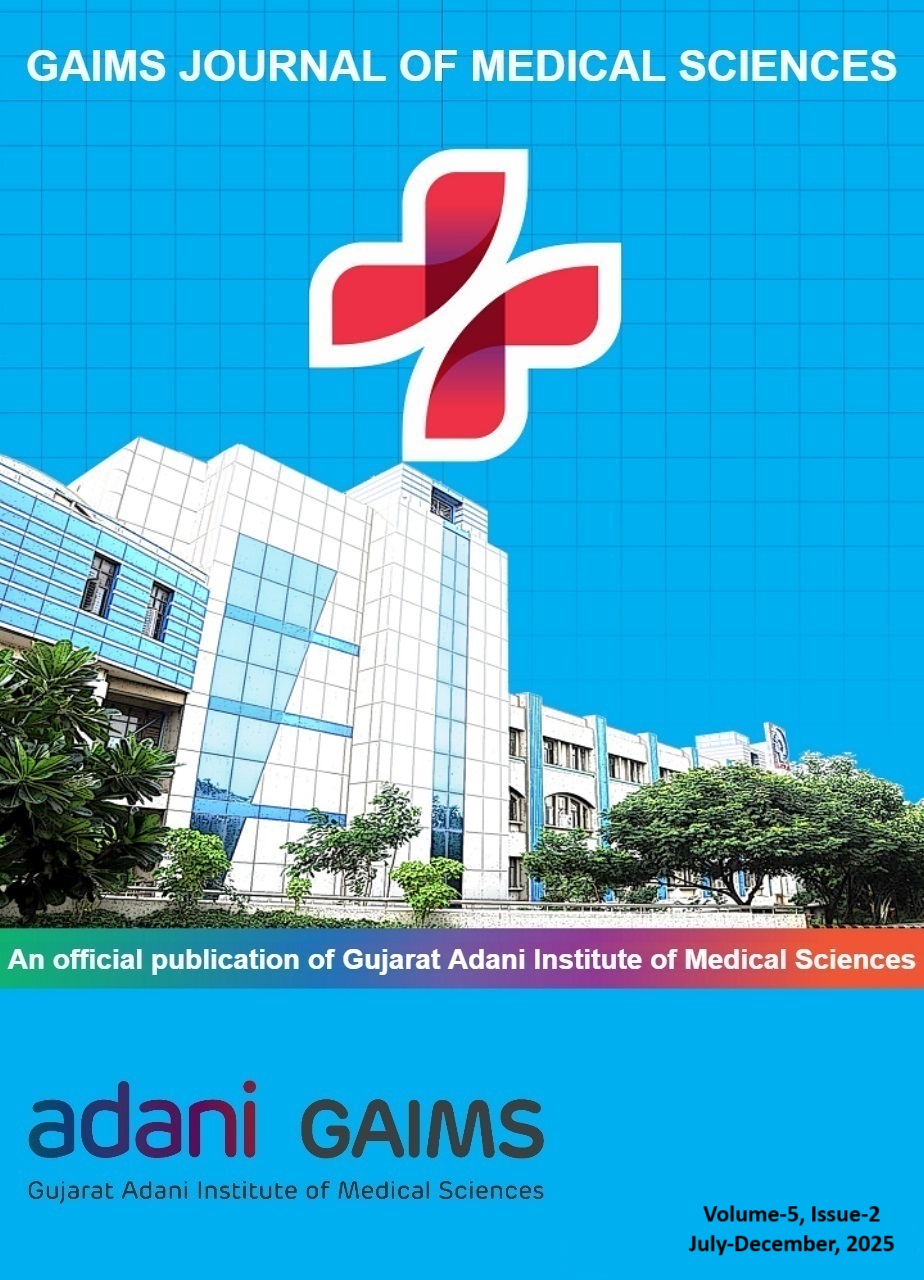Epidemiological Determinants of Unmet Need for Family Planning Among Eligible Couples in Ahmedabad
Keywords:
Family planning, Unmet need, AMC, Contraception, Eligible couple, UPHCAbstract
Background
The unmet need for family planning (FP) refers to the disparity between reproductive intentions and contraceptive behavior. According to NFHS-5, the total unmet need for FP is 10.3% among newly married couples in Ahmadabad, with higher rates in rural (10.8%) than urban (9.7%) areas of Gujarat. This study is conducted to identify the epidemiological determinants of unmet need for family planning among eligible couples in Ahmadabad and assess of U-PHC for provision of family planning services.
Methodology
A community-based cross-sectional study was conducted among married women (18-49 years) in 7 AMC zones. Stratified cluster sampling (n=900) was used, with 30 women selected from each of 30 UHCs, representing slum, slum-like, and non-slum areas. One-on-one interviews were conducted using an open-ended questionnaire." Interview of MO with filling up of checklists of 14 UPHC from 7 zones of AMC (2 centers each).
Results
Among married women, 74% expressed demand for family planning, with 67% seeking spacing and 7% seeking limiting. Nonusers exhibited an unmet need 30%, associated with significantly poorer FP knowledge (p < 0.05)." All 14 centers had organized an average 137 health and nutrition day in last 3 months; FP and methods of contraception were discussed by ANM. Supervision and counselling of FP found poor.
Conclusions
The study found a 30% unmet need for family planning among participants, with significant knowledge gaps, building and infrastructure is good in all except one U-PHC. Supervision found to be poor in all selected U-PHC’s.
Downloads
Published
Issue
Section
License
Copyright (c) 2025 Ashadevi H Sisodiya, Fatema Kachhawala , Aparajita Shukla

This work is licensed under a Creative Commons Attribution-NonCommercial-ShareAlike 4.0 International License.








